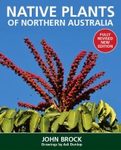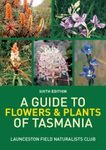Field / Identification Guide
By: Ian Clarke(Author), Helen Lee(Author)
438 pages, 64 plates with colour photos; 132 b/w line drawings
Teaching the practical skill of plant identification, the 3rd edition of this bestseller is useful around the world, despite its focus on Australian flowers. Features line drawings and superb anatomical photographs with many labels to help with identification.
![Name That Flower Name That Flower]()
Click to have a closer look
About this book
Customer reviews
Biography
Related titles
About this book
Name That Flower is a valued source of clear and concise information on identifying flowering plants from around the world, both cultivated and in the wild.
This edition is updated to align with current systems of plant classification that incorporate advances in molecular DNA analysis. It includes more than 130 detailed line drawings, 64 colour pages and information on 46 plant families. The illustrations depict a selection of widely distributed gardens plants and weeds, and species native in eastern and southeastern Australia. Easily navigated, Name That Flower facilitates the successful use of standard identification manuals and online resources available in most parts of the world and introduces the reader to the arrangement of flowers on plants, reproduction, plant structure and function, and the way species are grouped and named. Methods for dissecting flowers and observing their structure for identification purposes are clearly described.
This bestseller is used extensively as a teaching text in numerous courses concerned with the natural world, such as agriculture, horticulture, botany, environmental management and landscape design, as well as botanical art. It is an essential reference for serious gardeners and keen botanists, professional and amateur.
Customer Reviews
Biography
After working in a variety of technical jobs, including with the Forests Commission of Victoria and the Botany Department of the University of Melbourne, Ian Clarke was for many years employed in the plant identification service of the National Herbarium of Victoria. He transferred to a position as honorary associate there in 2003. He is the author and illustrator of a companion text, Name Those Grasses: Identifying Grasses, Sedges and Rushes, published by the Royal Botanic Gardens Victoria in 2015. Between 1975 and 1990 he was associated with the Council of Adult Education in Melbourne as a tutor in flowering plant identification.
The late Helen Lee, Honorary Research Fellow in the Botany Department, La Trobe University, held a Master of Science degree from the University of Melbourne. After lecturing in botany for two years at Queen's University, Belfast, she was for many years a part-time tutor in the botany departments of Melbourne and La Trobe Universities, and a tutor with the Melbourne Council of Adult Education. Upon retirement, she took up a position as Honorary Research Fellow in the Botany Department, LaTrobe University. Her research interests included the morphological characteristics of plants that resprout after fire, and arid zone ecology. She was a member of the Royal Society of Victoria and the Australian Systematic Botany Society.
Their collaboration on this book brings together over thirty years of involvement in tertiary and adult education. Although they worked together throughout, Helen Lee was largely responsible for the text and while Ian Clarke is in charge of the figures.
Field / Identification Guide
By: Ian Clarke(Author), Helen Lee(Author)
438 pages, 64 plates with colour photos; 132 b/w line drawings
Teaching the practical skill of plant identification, the 3rd edition of this bestseller is useful around the world, despite its focus on Australian flowers. Features line drawings and superb anatomical photographs with many labels to help with identification.
"[...] this book is a real winner [...] Having provided the basic knowledge on plants, the rest of the book is made up of descriptions of the important characteristics of forty-six plant families chosen to provide a range of flower structures. [...] Not all of the species used as examples are native plants but this is no disadvantage and the emphasis is certainly on natives. [...] Other excellent features of the book are a comprehensive and useful glossary of botanical terms and a list of very useful references. In summary, this is a book which should be in the library of anyone who is fascinated by plants and wants to know more about them."
– Roy Skabo, Eucryphia (Journal of the Australian Plants Society Tasmania Inc.) Volume 24(2), June 2020








































